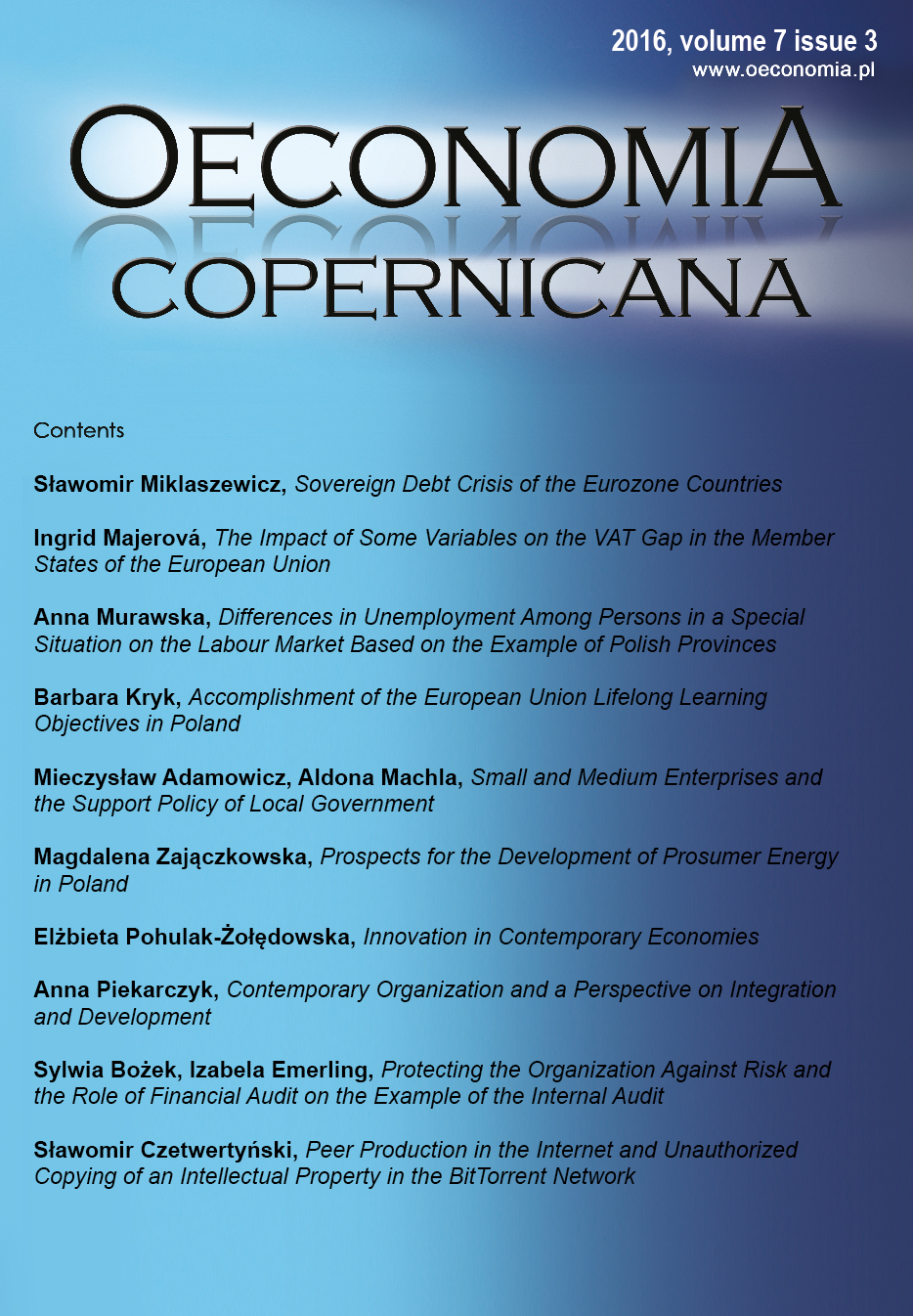THE IMPACT OF SOME VARIABLES ON THE VAT GAP IN THE MEMBER STATES OF THE EUROPEAN UNION COMPANY**
THE IMPACT OF SOME VARIABLES ON THE VAT GAP IN THE MEMBER STATES OF THE EUROPEAN UNION COMPANY**
Author(s): Ingrid MajerováSubject(s): Economy, Public Finances
Published by: Instytut Badań Gospodarczych
Keywords: tax gap; value added tax; Corruption Perception Index; GDP growth; VTTL model; regression analysis
Summary/Abstract: One of the most serious problems of fiscal character is the issue of the tax gap. The tax gap is defined as the amount of tax liability faced by taxpayers that is not paid on time. The tax gap comes from three main areas of non-compliance with the tax law – firstly, from underreporting of income, secondly, from underpayment of taxes, and thirdly, from non-filing of returns. The tax evasions in the area of value added tax create one of the largest groups of tax gaps. This article describes the current situation in the field of tax gap in selected countries of the European Union. The aim of this paper is to determine the dependence of the VAT gap on three variables: the Corruption Perception Index CPI, GDP growth rate and the basic VAT rate. The method of regression analysis was used, which was performed on data in the years 2000–2011. Although it could be assumed that tax burden will affect the VAT gap the most, the highest dependence was shown in the case of Corruption Perception Index.
Journal: Oeconomia Copernicana
- Issue Year: 7/2016
- Issue No: 3
- Page Range: 339-355
- Page Count: 17
- Language: English

